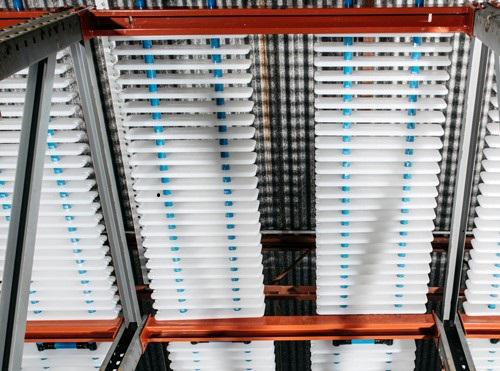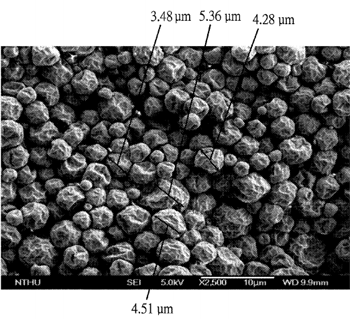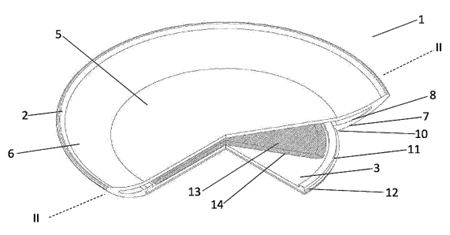 The Phase Change Matters e-mail newsletter is a weekly summary of the latest news and research on phase change materials and thermal energy storage. To subscribe, visit www.puretemp.com/subscribe. For more frequent updates, follow @puretemp on Twitter or visit the Phase Change Matters blog, www.puretemp.com/pcmatters.
The Phase Change Matters e-mail newsletter is a weekly summary of the latest news and research on phase change materials and thermal energy storage. To subscribe, visit www.puretemp.com/subscribe. For more frequent updates, follow @puretemp on Twitter or visit the Phase Change Matters blog, www.puretemp.com/pcmatters.
REFRIGERATION
PCM/PV system cuts energy use at San Diego food bank
Viking Cold Solutions has installed one of its hybrid cooling systems at a food bank in San Diego, Calif. The system combines rooftop photovoltaic panels and thermal energy storage to efficiently cool Jacobs & Cushman San Diego Food Bank‘s 80,000-square-foot warehouse.
 Plastic cells filled with a salt-hydrate phase change material are arranged in modules (right) installed above food storage racks. Solar-powered chillers solidify the PCM during the day. When the chillers are idle, the PCM absorbs heat as it melts, keeping the warehouse within its target temperature range.
Plastic cells filled with a salt-hydrate phase change material are arranged in modules (right) installed above food storage racks. Solar-powered chillers solidify the PCM during the day. When the chillers are idle, the PCM absorbs heat as it melts, keeping the warehouse within its target temperature range.
The Houston-based company says the system provides sufficient cooling capacity to cut grid consumption dramatically. “Between the hours of 7 p.m. to 7 a.m.,” Viking says of one six-week period, “grid consumption dropped from 168 KWh to 8.1 KWh, a 95% reduction. And peak demand from refrigeration dropped from a high of 46 kW at midday to 1 kW overnight.”
The warehouse is the central food distribution hub for San Diego County, serving an average of 400,000 people each month. Last year, the food bank distributed 22 million pounds of food.
RESEARCH
Nanofoam-PCM coating could make existing windows more efficient
With the help of $3.1 million federal grant, researchers at the Argonne National Laboratory are using nanomaterials to improve the energy efficiency of existing single-pane windows. The team is developing a nanofoam coating that uses gas bubbles less than 100 nanometers in diameter. The coating is designed to allow visible light to pass through while blocking heat and sound.
The research builds on another nanomaterial being developed at Argonne: vanadium dioxide, a phase change material that behaves differently at different temperatures. At low temperatures, vanadium dioxide is a semiconductor that allows light to pass through. At high temperatures, it develops metallic properties and blocks near-infrared light, the portion of the solar spectrum that contains about half of all solar energy. That helps reflect solar radiation on warm days. The team has created a film that can boost near-infrared blocking and is more efficient at reflecting solar radiation, all while maintaining window transparency.
The researchers hope that a combination of nanofoam and vanadium dioxide will result in single-pane windows that can match the efficiency of multi-pane low-emissivity units.
PATENTS
Process for preparing PCM microcapsule having thermally conductive shell
U.S. patent application 20160151757 (National Chung-Shan Institute of Science and Technology, Taiwan):
“A process for preparing a phase change microcapsule having a thermally conductive shell is introduced. The thermal conductivity of the encapsulation materials for the phase change microcapsules is increased by adding thermally conductive nano-materials. The vinylsilane compound is polymerized with the acrylic monomer to form the copolymer first, and then the thermally conductive inorganic material is added. Thereafter, the phase change microcapsule having the phase change material as the core and the thermally conductive material-containing copolymer as the shell is prepared.
 “The polar functional groups on the surface of the thermally conductive inorganic material condense with the vinylsilane compound to form chemical bonding, thereby substantially increasing the compatibility between the thermally conductive inorganic material and the copolymer. Therefore, the thermally conductive material can be dispersed stably during the encapsulation of the microcapsules, and the phase change microcapsule having the thermally conductive shell can be obtained successfully. …
“The polar functional groups on the surface of the thermally conductive inorganic material condense with the vinylsilane compound to form chemical bonding, thereby substantially increasing the compatibility between the thermally conductive inorganic material and the copolymer. Therefore, the thermally conductive material can be dispersed stably during the encapsulation of the microcapsules, and the phase change microcapsule having the thermally conductive shell can be obtained successfully. …
“The phase change material as described in the present invention is the organic phase change material; the organic phase change material is mainly selected from the group consisting of higher aliphatic hydrocarbons, higher fatty acids, higher fatty acid esters, salts of higher fatty acids, higher aliphatic alcohols, aromatic hydrocarbons, aromatic ketones, aromatic amides, and combinations thereof, but is not limited to the organic phase change materials described above.”
Plate for serving hot meals

U.S. patent application 20160150896 (Probalco Bvba, Belgium):
“The present invention concerns a plate (1) suited for directly dressing and serving meals directly thereon, which plate comprises a heat storing material (14) allowing keeping the meal dressed thereon warm for an extended period of time in view of regular plates without heat storing material. …
“The heat storing material preferably is a phase change material (PCM) chosen from the group comprising: hydrated salts, organic compounds, solid to solid PCMs, eutectic solutions and/or admixtures thereof.”
IN BRIEF
• Vertellus Specialties Inc. has filed for Chapter 11 bankruptcy protection. The Indiana-based chemical company, whose products include paraffin-based phase change material, says its term loan lenders have agreed to open the bidding at an auction for most of its business. Vertellus received court approval this week to operate its business as usual during the bankruptcy process.
• Hydro, wind and solar accounted for 14.6 percent of Australia’s electric power in 2015, the Clean Energy Council says.
• Renewable energy sources accounted for 52.2 percent of Spain’s power generation in the first five months of 2016, according to grid operator Red Electrica de Espana.
• A record $328.9 billion was invested globally in solar, wind and other renewable energy sources in 2015, according to a report by REN 21, a coalition of governments, renewable energy trade associations and financial institutions. Spending in Europe was $48.8 billion, down from $62 billion a year earlier.
RESEARCH ROUNDUP
For our full list of recent academic research, see puretemp.com/academic. Here are highlights from the past week:
From Energy Conversion and Management:• A refrigerated container envelope with a PCM (Phase Change Material) layer: Experimental and theoretical investigation in a representative town in Central Italy
From Journal of Energy Institute:
• Diffusion and thermal conductivity of the mixture of paraffin and polystyrene for thermal energy storage: A molecular dynamics study
From Building and Environment:
• Experimental study on the thermal performance of air-PCM unit
From Applied Thermal Engineering:
• An experimental study of the latent functionally thermal fluid with micro-encapsulated phase change material particles flowing in microchannels
• Energy performance of double shape-stabilized phase change materials wallboards in office building
From Applied Energy:
• A simple model for automatic analysis and diagnosis of environmental thermal comfort in energy efficient buildings
From Journal of Heat Transfer:
• Modeling the Heat Transfer Coefficient Between a Surface and Fixed and Fluidized Beds With Phase Change Material
From Renewable Energy:
• Evaluation of the application of Phase Change Materials (PCM) on the envelope of a typical dwelling in the Mediterranean region
From Energy and Buildings:
• Experimental research on a novel energy efficiency roof coupled with PCM and cool materials
From Construction and Building Materials:
• Properties of cementitious mortar and concrete containing micro-encapsulated phase change materials
NETWORKING
Connect with PCM experts and industry leaders on LinkedIn
More than 750 of your peers have joined a LinkedIn group devoted to the discussion of phase change material and thermal energy storage. The Phase Change Matters group is an interactive complement to the award-winning blog and newsletter of the same name.
You are invited to join the group and connect with PCM and TES experts from around the world. New members this week include Stef Van Vree, project leader at Intramax BV, Netherlands; Helén Jansson, assistant professor at Chalmers University of Technology, Gothenburg, Sweden; Mary Stianchie, project engineer at ThermoSafe – ISC Labs, Philadelphia; and Nate Green, senior manager for corporate business development at Renewable Energy Group Inc., Ames, Iowa.